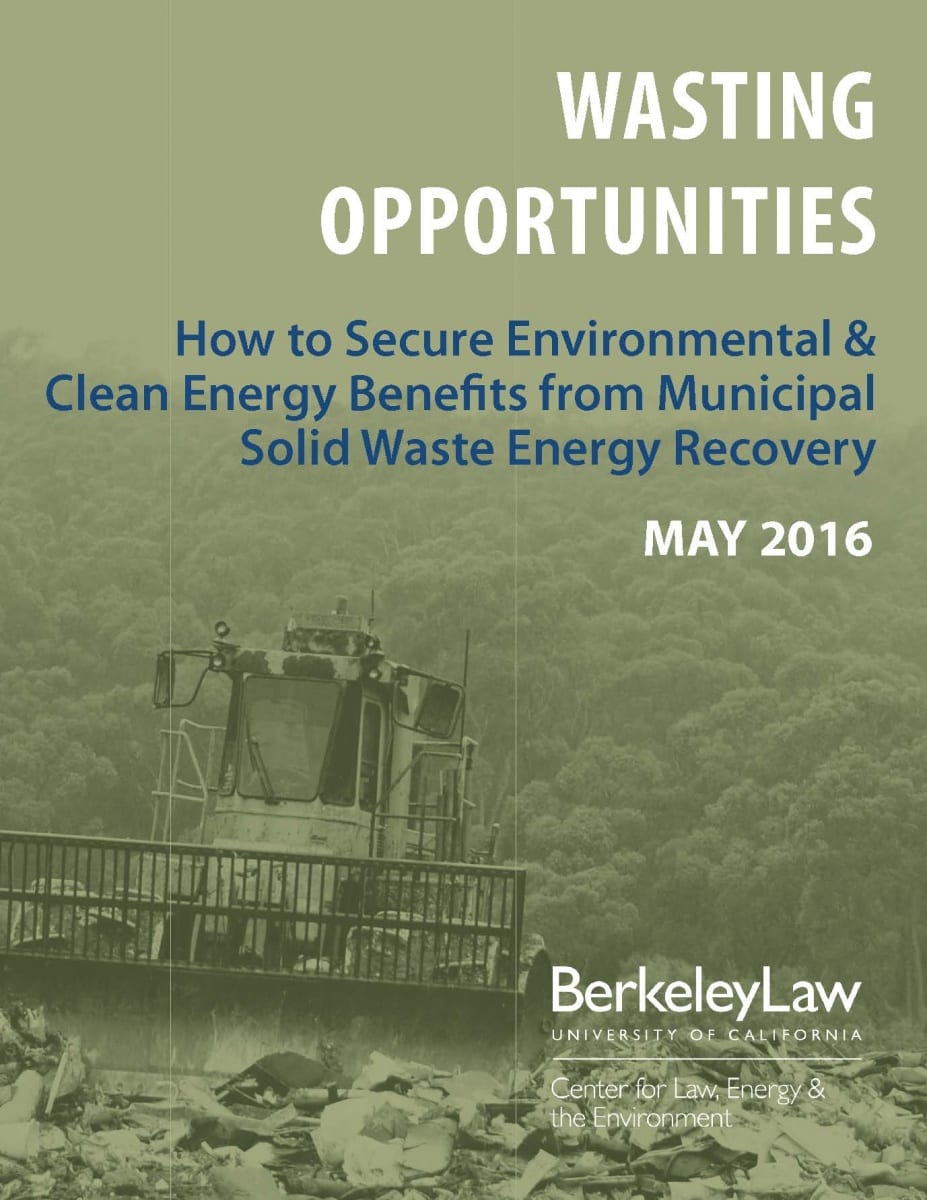May 2016
 Californians send 30 million tons of waste to landfills annually. While reduction, recycling and composting can do their part, not all types of materials can be practically and economically recycled in an environmentally beneficial manner. This leftover trash stream may therefore present an opportunity to recover energy, using new and possibly cleaner technologies. However, California lacks an agreed-upon set of standards for measuring and balancing the life-cycle costs and benefits of various waste management methods, including energy conversion.
Californians send 30 million tons of waste to landfills annually. While reduction, recycling and composting can do their part, not all types of materials can be practically and economically recycled in an environmentally beneficial manner. This leftover trash stream may therefore present an opportunity to recover energy, using new and possibly cleaner technologies. However, California lacks an agreed-upon set of standards for measuring and balancing the life-cycle costs and benefits of various waste management methods, including energy conversion.
Recommendations
Our report recommends solutions for the state to address this challenge, including:
- The development of technology-neutral, performance-based standards for energy recovery of waste materials that will not discourage recycling;
- A revised waste disposal hierarchy that includes energy conversion that reduces overall pollution and contemplates “dispersion” as the lowest rung beyond disposal; and
- A revised landfill tipping fee that accounts for the full range of environmental costs.
Ultimately, if policy makers and stakeholders identify new technologies that warrant investment, the state will need processes to address the significant environmental justice concerns related to siting any approved facilities. While this report focuses on technology standards, land-use siting processes could be a subsequent area of study.
Download the Full Report:
Listen to CLEE-Hosted Radio Show:
Lets Talk Trash: Waste-to-Energy in California (May 2, 2016)
For More Information:
Contact Ethan Elkind, Director, Climate Program, Center for Law, Energy & the Environment at UC Berkeley Law